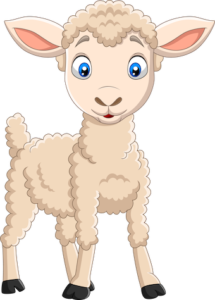Y2. Lesson 13. Practice semiquavers [tika tika]
Prior learning: Semiquavers
Duration: 30 minutes
Materials:
Keywords: Beat, rhythm, singing, chanting, partners, rhymes, circle games.
Difficulty: ![]()
Prepare
Present
Practise
Semiquavers [tika tika]
 Melodic development
Melodic development
![]() Students point to the melodic contour as they sing.
Students point to the melodic contour as they sing.
- Students are seated and attentive.
- Explain to the class that they will use their hands to show the melodic contour of the song I See The Moon.
- Lead the class in singing the song and show the melodic contour as you do so.
- The class should sing and follow your movements.
 Rhythmic development
Rhythmic development
![]() Students discover semiquavers [tika tika] and where they are found in a known song.
Students discover semiquavers [tika tika] and where they are found in a known song.
- Project the score on the board as a reference.
- Lead the class in singing Old Brass Wagon [using 'Circle to the left' lyrics].
- Ask the class for the time name for four sounds on a beat [tika tika].
- Ask where tika tika can be found in the song [first three measures]
- Ask which words are used for tika tika [Old Brass wagon].
- Lead the class in singing the first two measures using time names [tika tika ta, ti-ti ti-ti (x2)]
- Repeat for the last two measures.
 Creative movement
Creative movement
![]() Students take a partner to perform actions and sing.
Students take a partner to perform actions and sing.
- Students take a partner and stand facing each other and holding hands.
- Lead the class in singing Bluebells.
- Students sway to the beat and turn a half circle back-to-back on the word 'over'.
- As the song continues, they turn a half circle again on 'over' to face each other again.
 Listening
Listening
![]() Students identify a song through listening to the melody.
Students identify a song through listening to the melody.
- Play the first track on the player.
- Ask students the name of the song.
- After receiving a correct answer, play subsequent tracks and repeat the question.
- At the conclusion, ask if any of those songs had a tika tika pattern.
 Visual learning
Visual learning
![]() Students write the stick and traditional notation for semiquavers [tika tika]
Students write the stick and traditional notation for semiquavers [tika tika]
- Project the graphic on the board, which shows the stick and traditional notation for the first two measures of Dinah.
- Explain that the tika tika time name is written as four stems joined together by two beams.
- Ask students to write this down in their notebooks.
- Show the traditional notation of four stems, each with a notehead and joined by two beams.
- Ask students to write this down in their notebooks.
- Explain that the stick notation shown on the board is for the first two measures of Dinah.
- Sing those measures and point to the stick notation.
- Repeat with the traditional notation.
 Instruments
Instruments
![]() Students play Mary Had A Little Lamb using tuned percussion.
Students play Mary Had A Little Lamb using tuned percussion.
- Divide the class into two groups, one group will use glockenspiels and the other xylophones or similar instruments.
- Teach the melody of Mary Had A Little Lamb to the first group, using a good mallet technique.
- When secure, teach the accompaniment to the second group.
- When secure, lead both groups to play together and conduct whilst monitoring class progress.
- This exercise may take more than one learning period to master.

 Part work
Part work
![]() Students must match a rhyming word to a colour chosen in this song.
Students must match a rhyming word to a colour chosen in this song.
- Students are seated and attentive.
- Sing Ida Red to the class, who will then choose a new colour for Ida's dress and a rhyming word for the colour.
- Sing the song using the new colour and the rhyming word.
- This is an excellent cross-curricular exercise to develop language.
 Questions
Questions
- Which words rhyme with the following?
- Red
- Blue
- Green
- White
- Black
- Pink
Students section

Try these quick questions!
 Assess
Assess
Suggested lessons
Y1. Beat II

Y1. Beat III

Y1. Beat IV

